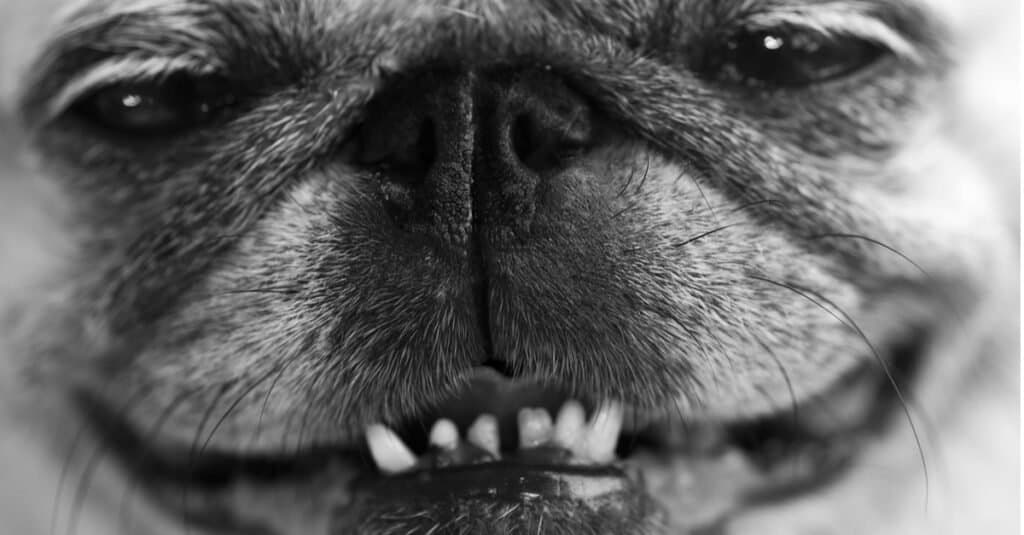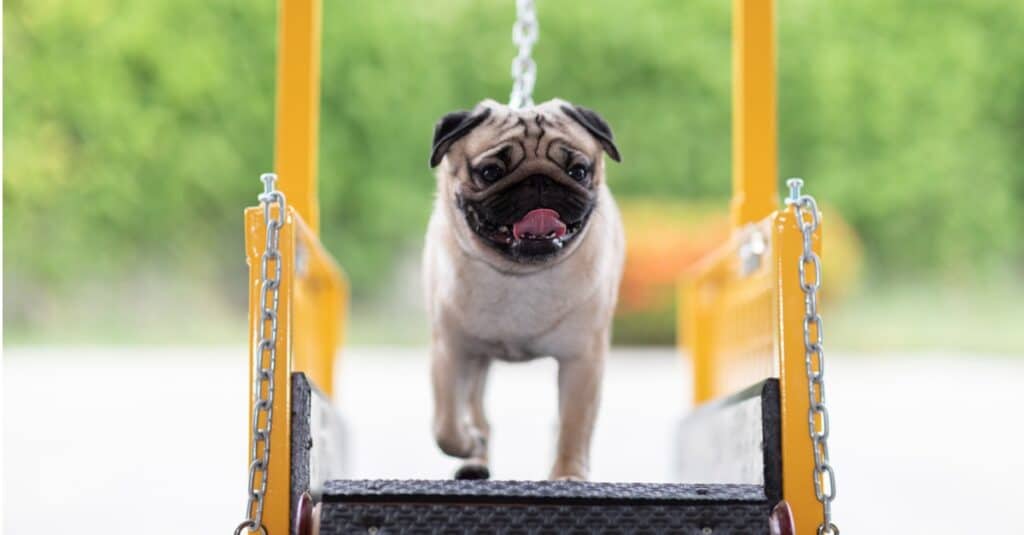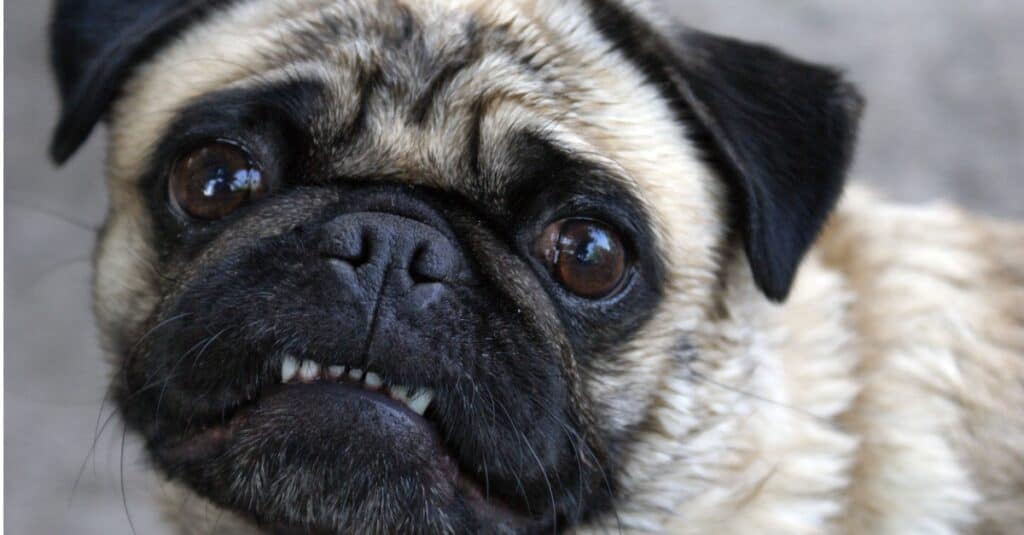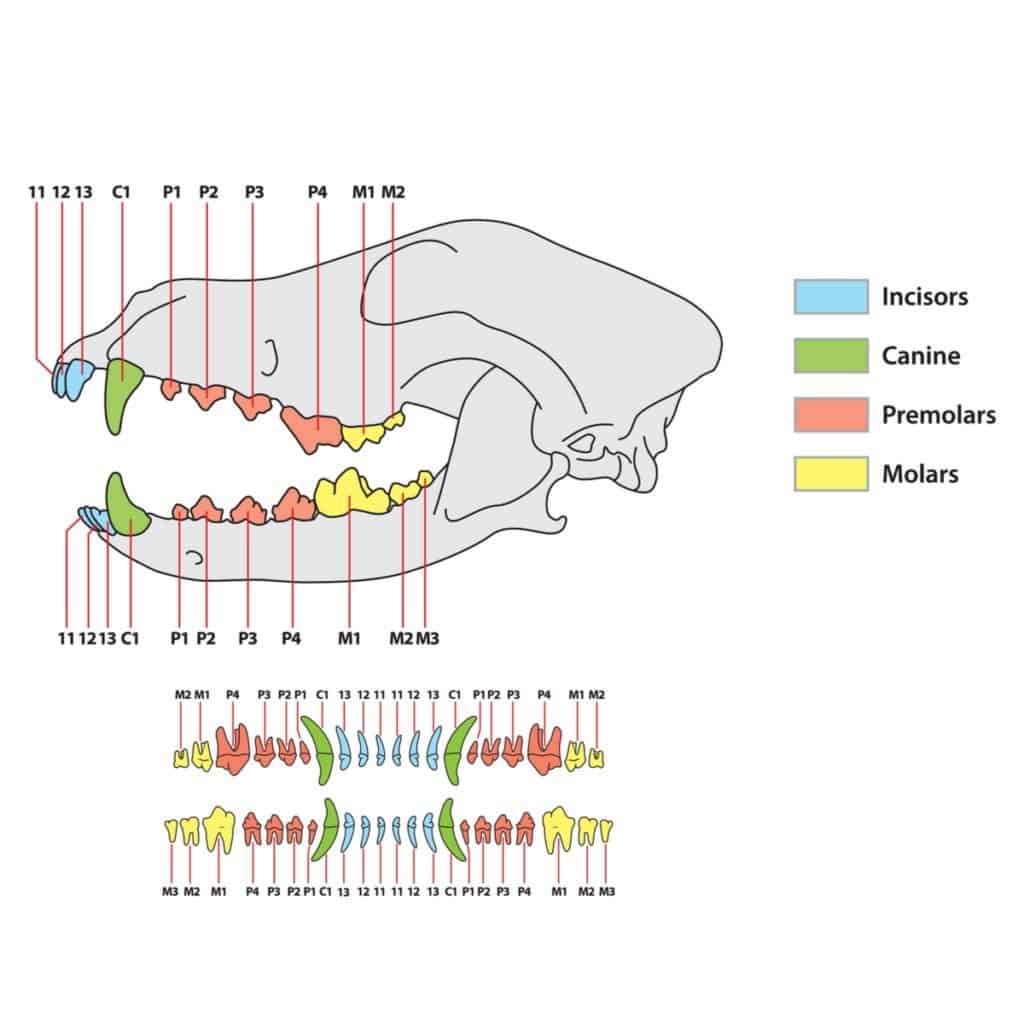Pugs may be goofy-looking, as they have short muzzles, flattened faces, and wrinkled skin. However, pugs are among the best dog breeds to have as pets, especially when living in an apartment or the city. Their tiny size reaching only about 12 inches tall and weighing up to 20 pounds make them a great pet choice in small and urbanized places. Despite their seemingly small heads, pugs host many teeth in their mouth, including needle-sharp teeth. Since their heads and mouths are so tiny, their teeth try to fight for space inside their mouths, usually causing some dental problems.
Pugs are one of the most adored dog breeds at home as they are low maintenance, charming, outgoing, and very friendly. But like most dogs, their friendliness still has its limits. When provoked, they can still bite, which, unfortunately, isn’t an easy feat for them either. Pugs are brachycephalic dogs, which means the structure of their heads has been genetically mutated to be short and wide. This head structure hinders pugs from biting efficiently. Because of the shape of their head, pugs are susceptible to many other conditions, which is why pug owners should take good care of them to help them live long enough.
What Kind of Teeth Do Pugs Have?

©BCFC/Shutterstock.com
Pugs have a variety of teeth types inside their mouth, including incisors, canines, premolars, and molars. They are diphyodont, meaning they only grow two sets of teeth in their lifetime. A deciduous set of teeth, often known as milk teeth, will erupt a few weeks after birth and be replaced by permanent teeth as they grow older.
Whatever stage the pug is in, whether it is in its teething stage or adult stage, brachycephalic breeds are often prone to several dental problems. So pug teeth should always be checked and cleaned to ensure that they get the proper dental care they need.
Both domesticated and wild dog breeds are known to have sharp canine teeth that resemble fangs, which aid in tearing and cutting flesh. Domesticated dogs, however, eat dog food and other pre-sliced meals; thus, they use their teeth more frequently for chewing toys and ripping hard chunks of meat in their food rather than hunting and grabbing prey. Although pugs are not labeled vicious, they can still attack when threatened, and their first line of defense is their sharp, canine teeth.
How Many Teeth Do Pugs Have?

Pugs have 42 teeth.
©220 Selfmade studio/Shutterstock.com
Adult pugs typically have 42 teeth unless interrupted by dental issues. However, during their younger ages, pugs only have a set of 28 deciduous teeth that they will shed as they grow older. As the milk teeth fall out one by one, new, permanent ones will replace them until the pug completes a dentition of 42 teeth. Pugs have a dental formula of 2 (Incisors 3/3, Canines 1/1, Premolars 4/4, Molars 2/3) = 42.
Pugs have 20 teeth in their upper jaw and 22 in the lower mandible. Having more teeth on the bottom jaw than the top causes pugs to have their classic underbite, where the lower jaw is longer than the upper jaw. An underbite is classic for brachycephalic dog breeds and usually does not lead to more severe conditions, but it can get in the way of food. The pug’s underbite can also cause mild injuries in their mouth.
What Do Pugs Use Their Teeth For?

Pugs use their teeth to scrape and chew their food.
©iStock.com/matt_benoit
Canines naturally have long, sharp canine teeth that assist them in grabbing and tearing their prey. Domesticated dogs, such as the pug, have evolved to eat pet food and pre-sliced meals; thus, they rarely eat with these canines. Pugs use their incisors to scrape and chew their food. The upper front teeth may be hard to spot because of the underbite, but their incisors have flat edges that help cut food. When eating meaty meals, pugs frequently use their cheek teeth (premolars and molars) to smash and grind food. The premolars of pugs have sharp, cutting-edges that help them cut meat.
Pug Teeth Diagram

A dog teeth diagram. Pugs have 42 teeth.
©Rainer Lesniewski/Shutterstock.com
Pugs have a mixture of incisor, canine, premolar, and molar teeth. The breed has an underbite that can cause injuries.
Pug Teething
In their early stages, pugs undergo a teething process when their first set of teeth, the baby teeth, erupt, and later on, are replaced by permanent teeth. The pug’s teeth emerge at different ages. They are born without teeth, but as they reach 6 to 8 weeks, the first teeth (milk teeth) start to erupt. The deciduous incisors, canines, and premolars emerge at different weeks of age. They will begin to fall out at 4 months of age as they get replaced by permanent or adult teeth. At 9 months, the puppy will have its complete set of permanent teeth. Once any of this new set of teeth falls out, it can never grow back again.
The teething process can be painful for pugs as it causes swollen gums. The swelling and discomfort will drive pugs to constantly chew and gnaw on things, which is the best time to give them chew toys. Sometimes, pug puppies can swallow their milk teeth during feeding or drinking. If this happens, there is nothing to worry about because the teeth are tiny enough to pass through their digestive tract and secreted along with their stool.
It is also common for a pug’s adult teeth to erupt even before the deciduous teeth loosens. In this case, a veterinarian should remove it manually so the emerging adult tooth can align properly. If retained baby teeth are not removed, they can cause problems with the pug’s dental alignment, hinder feeding, and affect the gums.
Do Pugs Bite?
Pugs are not typically aggressive dogs and are not known as “biters.” However, if they are not trained to socialize, they can nip or bite people they feel uncomfortable with. They can also nip when teething, but these nips and bites are rarely severe. Due to pugs mouth shape, they have a hard time biting efficiently, making their bites less harmless.
The photo featured at the top of this post is © iStock.com/matt_benoit
Ready to discover the top 10 cutest dog breeds in the entire world?
How about the fastest dogs, the largest dogs and those that are -- quite frankly -- just the kindest dogs on the planet? Each day, AZ Animals sends out lists just like this to our thousands of email subscribers. And the best part? It's FREE. Join today by entering your email below.
Thank you for reading! Have some feedback for us? Contact the AZ Animals editorial team.







